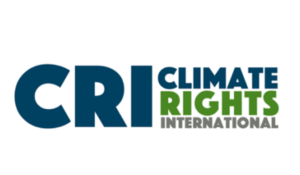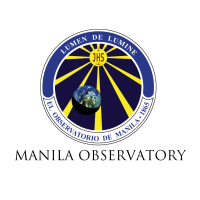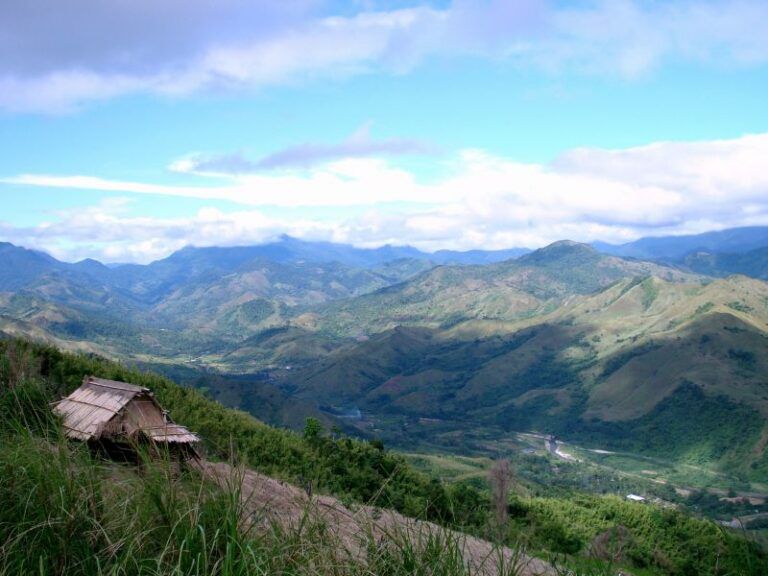

To:
President Ferdinand Romualdez Marcos Jr.
Malacañang Palace Compound
J.P. Laurel St., San Miguel, Manila
Philippines
Through:
Secretary Antonia Yulo-Loyzaga
Department of Environment and Natural Resources
DENR Main Building
DENR, Visayas Avenue, Quezon City
Re. Kaliwa Dam Project
Dear President Marcos,
We write to you about the Kaliwa Dam Project. Congratulations on completing one year in office on June 30, 2023.
Climate Rights International (CRI) is an international non-governmental organization that believes progress on climate change cannot succeed without protecting human rights – and the fight for human rights cannot succeed without protecting our planet against climate change. To achieve this, we work in partnership with local and international groups around the world to document how human rights violations contribute to climate change, and how climate change contributes to human rights abuses.
The Manila Observatory (MO) is a non-profit research institute housed on the campus of the Ateneo de Manila University in Quezon City, Philippines. It was founded by the Jesuits in 1865 and became the official institution for weather forecasting in the Philippines in 1884. The observatory’s current research focus includes Climate Change Adaptation – Disaster Risk Management and Co-benefits of Climate Change Mitigation.
CRI and MO welcome your unequivocally stated commitment to place the environment and the country’s resiliency and ability to adapt to the challenges of climate change at the “top of the national agenda.” Equally, we appreciate your recognition of the important contribution of Indigenous Cultural Communities (ICCs) and Indigenous Peoples in passing on a living heritage to future generations in the country, as well as your description of indigenous cultures and traditions as “a splendid mixture of cultural jewels that together give [the Philippines] its crowning glory.”
However, after field research and consultations with local residents and experts, we have significant concerns regarding the Kaliwa Dam Project centered in the provinces of Rizal and Quezon. These concerns directly relate to both the environment and the human rights of Indigenous Peoples in the project area. As the STOP Kaliwa Dam Network (SKDN) put it, “While we recognize that Metro Manila has legitimate concerns on water security, these should not be addressed at the expense of human rights, our environment, Philippine laws and sovereignty.”
Many of these concerns have previously been raised by both the STOP Kaliwa Dam Network and by SUKATAN-LN, a Dumagat-Remontado advocacy group, founded in 2015 by members of all ten directly impacted villages in Brgy. Daraitan, Tanay, Rizal. Experts at the Manila Observatory have previously warned of environmental consequences that need to be factored in and mitigated before further project implementation proceeds. These consequences include the potential submerging of communities, flooding in low-lying areas including the greater Manila area, and biodiversity loss.
Our initial findings suggest that these concerns, listed below, require an investigation by independent experts and a commitment to implement their recommendations. All activities related to building the Kaliwa Dam should be suspended until the investigation is completed.
Human Rights Concerns
Livelihoods
Construction of the dam as planned will have significant adverse economic impacts on the lives and livelihoods of the Dumagat-Remontado Indigenous People and the non- indigenous peoples of the area. The principal sources of livelihood for residents of the area are agriculture and tourism. Mt. Daraitan and the Tinipak River bring in hundreds of tourists weekly, as the Tinipak River’s limestone formations and pristine water and Mt. Daraitan’s moderately easy trek are both famous spots in Rizal. The communities’ proximity to the river means that many families also rely on indigenous farming as a source of livelihood.
In the absence of viable alternative sources of livelihood, it is likely that Indigenous Peoples in the area will face a steep decline in living standards and increased poverty with no clear government plan to provide alternatives.
Compensation
The Indigenous Peoples’ Rights Act (IPRA) appears to have been applied selectively and incorrectly by the National Commission on Indigenous Peoples (NCIP) in violation of Philippine law.
The NCIP claims that leaders of the Dumagat-Remontado indigenous groups in Rizal and Quezon provinces received PHP160 million in “disturbance fees” for the construction of the Kaliwa Dam Project. Each Indigenous Peoples Organization (IPO) in Tanay and General Nakar received PHP80 million through the NCIP, which is supposed to oversee the implementation of livelihood programs and projects for these IPOs. Under the agreement, the 36 IPOs in General Nakar and the 10 IPOs in Tanay will receive an annual financial assistance of PHP1 million each once the Kaliwa Dam becomes fully operational in 2027.
Responding to complaints, in June 2021 the House Committee on Indigenous Cultural Communities and Indigenous Peoples called for the suspension of all work in Indigenous areas affected by the project pending completion of an appropriate Free Prior and Informed Consent (FPIC) process. Multiple claims of irregularities in the award of compensation remain unaddressed.
Free, Prior, and Informed Consent Process (FPIC)
The National Commission on Indigenous Peoples (NCIP) has been accused by some local residents and NGOs representing Indigenous Peoples of approving infrastructure and resource extraction projects on behalf of Indigenous Peoples without regard to their concerns and objections, and on the basis of inadequate and questionable implementation of the internationally accepted requirements for seeking FPIC.
Residents say that in the early stages of the project in 2017 the NCIP did not conduct a public hearing in Daraitan, despite the area being the most directly affected by the project. When the Environmental Management Bureau (EMB) finally did go to Daraitan to explain the project, they failed to present documents in the local language and, significantly, failed to explain that the area would be submerged as a consequence.
According to the IPRA, every village must have an indigenous political structure (IPS) which consists of Village Heads and Elders. Tanay has 50 IPS’s with 5 representatives for each village. Local residents allege that instead of a consultation per village, the NCIP pre-selected Indigenous Peoples Mandatory Representatives (IPMR) who supported the project without consultation with the wider community. Local leaders say they were not involved in EMB’s field-based investigation, so the ensuing document did not reflect their viewpoints. Instead, the IPMR cited in the report were village elders who were not chosen by the community to represent them.
In addition, according to the Dumagat-Remontado group that marched to Malacañang to air their concerns, the NCIP failed to compel the Metropolitan Waterworks and Sewerage System (MWSS) as the implementing authority to engage meaningfully in the FPIC process.
According to Ma. Clara Dullas of Kababaihang Dumagat (K-Gat), the NCIP did not follow a meaningful FPIC process:
“All of the problems stem from the fact that our group hasn’t been consulted for our opinions regarding what should be done within our ancestral domain. Our rights are not being respected, even though there’s the Indigenous People Rights Act 8371, it is not being properly utilized. All ten barangays should be consulted. We will appoint a representative who will participate in the FBI [Field Based investigation] report along with the DENR and NCIP, to visit the area and assess the various aspects of life here that haven’t undergone the correct process. Starting from the FBI, there are already mistakes. The Free, Prior, and Informed Consent process is also flawed, as well as the representation from the EMB, and the MWSS in their gathered data. Of the ten barangays with Indigenous People (IP) holding the Certificate of Ancestral Domain Title (CADT), we are the owners of the CADT in Tanay. These ten barangays need to be consulted. Because within one barangay, there are four communities. From these ten, the whole tribe should discuss and select a representative – this representative will be our voice in the study they will conduct within our ancestral domain – determining what needs to be preserved, as per the guidance of our tribe and the wishes of each community member.” (Translated from Tagalog)
Cultural Rights
The Tinipak River, which flows from Tanay, Rizal to General Nakar, Quezon Province is central to the spiritual lives of the Indigenous Peoples, specifically for the Dumagat-Remontado as it houses a spring that they consider sacred. Hence, the construction of the dam represents an irreversible and irreplaceable loss of heritage and culture to the Dumagat-Remontado.
Climate Change and Environment Concerns
Deforestation
The Kaliwa Dam is currently being constructed within an area declared as a forest reserve through Proclamation No. 573 (1968), known as the Kaliwa Watershed Reserve, by then- President Ferdinand Marcos. In 1977, Presidential Proclamation No. 1636 was issued, which made part of the watershed a National Park and Wildlife Sanctuary (NPWS), which makes the dam’s construction and operation an Environmentally Critical Project (ECP) that could potentially result in irreversible and large-scale environmental damage. Further, the reserve has been designated as an International Union for the Conservation of Nature (IUCN) Category V Protected Landscape/Seascape.
The Luzon rainforest covers areas of the Sierra Madre, where the dam is being constructed. The dam’s construction will then inevitably lead to increased deforestation in the already tenuous, highly deforested area. Due to the fact that the government wants to use the dam to supplement the daily water needs of Metro Manila, it is expected that the reservoir that will be created as part of the dam’s operations will submerge 93 hectares of forestland, including numerous sites that are considered sacred by the indigenous communities residing in the area.
The Sierra Madre is one of the largest remaining rainforests in the country. While there are no percentages available yet on actual damages, the dam’s construction as well as the construction of structures and roads that will be needed to operate the dam will impact thousands of hectares of residual forests in the Kaliwa watershed area.
Increased Risks from Typhoons, Landslides, Flooding
The area where the dam would be located straddles the provinces of Quezon and Rizal, provinces that are flanked by the Sierra Madre mountains. The mountain range, the longest in the country and spanning over 540 kilometers, is the Philippines’ biggest shield against typhoons that form and come in from the Pacific Ocean. The deforestation that will result from the Kaliwa Dam’s construction will weaken the mountain range’s ability to protect the low-lying communities within and surrounding Rizal and Quezon, including the National Capital Region. Along with deforestation, the creation of a massive crater to construct the dam is likely to affect the land’s structural integrity, which can lead to increased flooding, landslides, and erosion, especially to low-lying areas and particularly during the typhoon seasons. This could lead to the destruction of agricultural areas and wildlands.
Harm to Ecosystems and Biodiversity
The dam will likely harm the ecosystem and the biodiversity of the Sierra Madre mountain range. The range houses various fauna, including the Philippine Warty Pig and the Vulnerable Northern Rufous Hornbill, among others, as well as hundreds of species of flora, including many that are already endangered.
The Philippines International Legal Obligations and Commitments
Paris Agreement
The Paris Agreement, which the Philippines ratified in 2017, effectively places on countries the obligation to ensure that their laws, policies, and actions related to climate change mitigation, adaptation, and loss and damage respect and protect human rights. This includes both the effects of their actions and the failure to act, where the failure to act will lead to a foreseeable loss of human rights. Equally, the Glasgow Climate Pact, agreed in November 2021 at the 26th Conference of Parties under the UNFCCC, highlights the need to ensure participation of potentially underrepresented groups, including Indigenous Peoples.
The U.N. special rapporteur on human rights and the environment has asserted that states must, “Ensure an inclusive, equitable and gender-based approach to public participation in all climate-related actions, with a particular emphasis on empowering the most affected populations, namely women, children, young people, Indigenous Peoples and local communities, persons living in poverty, persons with disabilities, older persons, migrants, displaced people, and other potentially at-risk communities.”
Indigenous Peoples’ Rights
In addition, special rules are increasingly applicable where the rights of Indigenous Peoples may be affected. ILO Convention 169, which was adopted in 1989, went into force in 1991, and is now regarded as customary international law, states that Indigenous Peoples “shall have the right to decide their own priorities for the process of development as it affects their lives, beliefs, institutions and spiritual wellbeing and the lands they occupy or otherwise use, and to exercise control, to the extent possible, over their own economic, social, and cultural development. In addition, they shall participate in the formulation, implementation and evaluation of plans and programmes for national and regional development which may affect them directly.”
Adopted by the UN General Assembly in 2007, the UN Declaration on the Rights of Indigenous Peoples provides that states shall consult and cooperate with Indigenous Peoples “to obtain their free, prior and informed consent” before adopting measures that may affect them. The Declaration has the support of all but 11 countries and is increasingly treated as a mandatory minimum standard.
Inclusion of Indigenous Peoples in decision-making is critical to protect their rights and for broader reasons. Indigenous Peoples are often the best protectors of land and natural resources, which include important carbon sinks in the Amazon, Borneo, the Congo River Basin, and elsewhere. As the IPCC has increasingly recognized, the traditional knowledge of Indigenous Peoples, who have been faced with adaptation challenges for centuries and have developed strategies for resilience in changing environments, can and should play a critical role to enrich and strengthen current and future adaptation efforts.
Free, Prior, and Informed Consent (FPIC)
FPIC standards and guidelines typically include provisions related to the process for obtaining consent, the types of information that must be provided to the affected Indigenous Peoples, and the consequences of withholding consent.
In addition to the legal standards cited above related to Indigenous Peoples, the World Bank’s Environmental and Social Framework also contain FPIC requirements.
Businesses also have a responsibility to respect the principles of FPIC as part of their broader responsibility to respect human rights. Specifically, under the UN Guiding Principles on Business and Human Rights, businesses should avoid causing or contributing to adverse impacts on these rights through their own activities, and seek to prevent or mitigate the impacts of enterprises in their value chains.
Mr. President, we hope you will agree to our recommendation for a suspension of all activities related to building the Kaliwa Dam while an investigation by independent experts is conducted, and that you will make a commitment to implement their recommendations. As you have stated, in the battle to mitigate climate change “there will be no weapons to use; only behaviors and practices to improve upon.” We call upon you to make the Kaliwa Dam project a model of that improvement that provides inspiration to others in the years to come.
Yours sincerely,
Brad Adams
Executive Director
Climate Rights International
Antonio G.M. La Viña
Director, Klima Center
Manila Observatory
Photo Credit: Tanay Valley by Jose Nicdao. Photo via Flickr (CC2.0).







